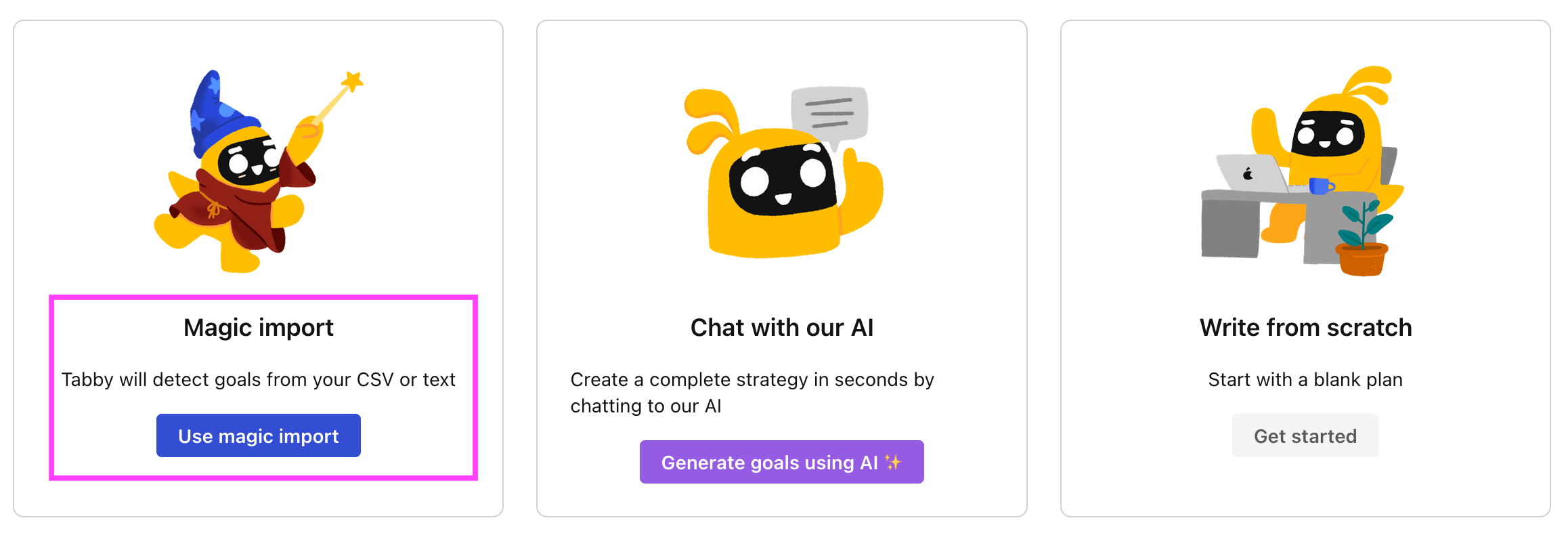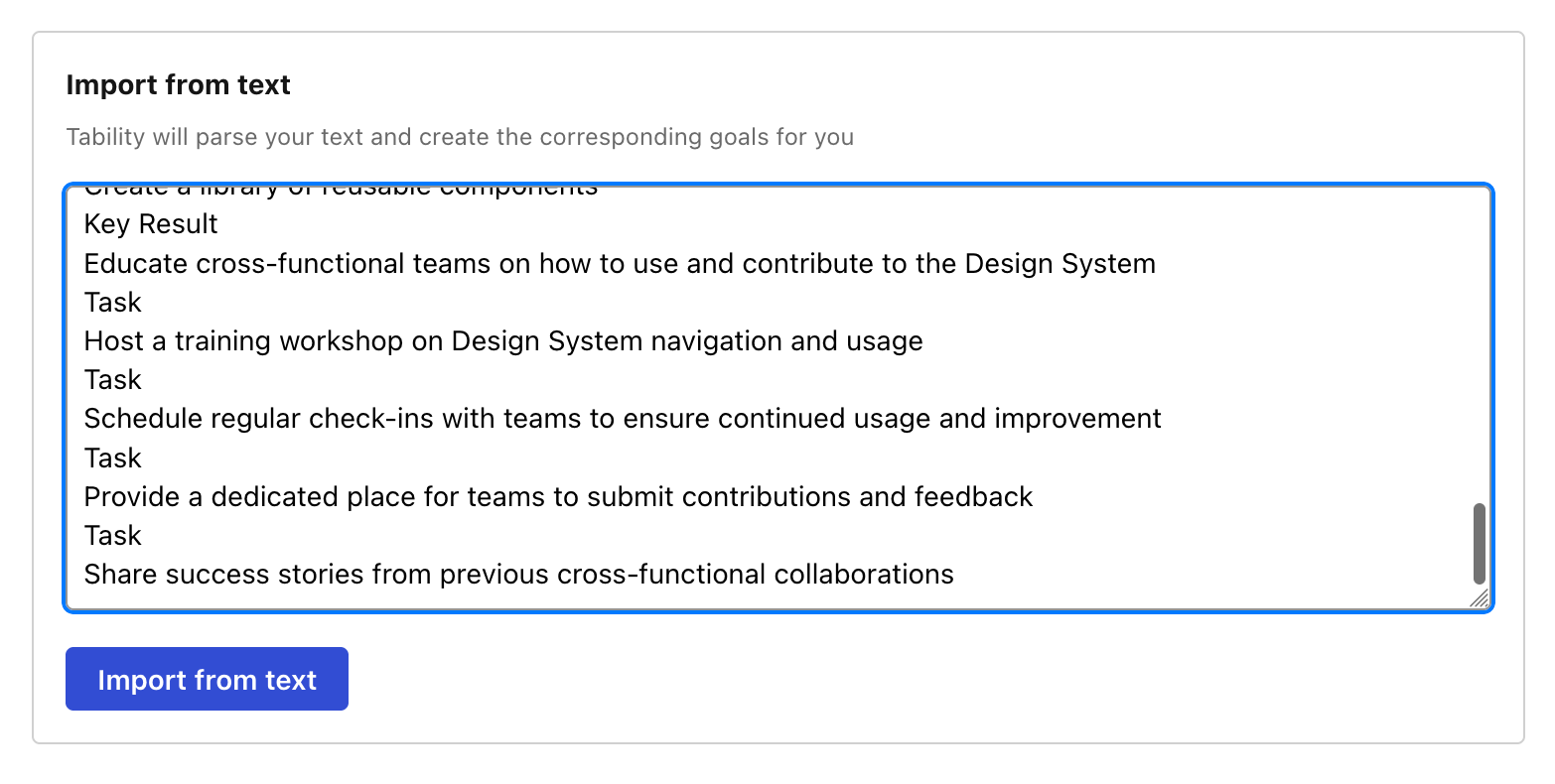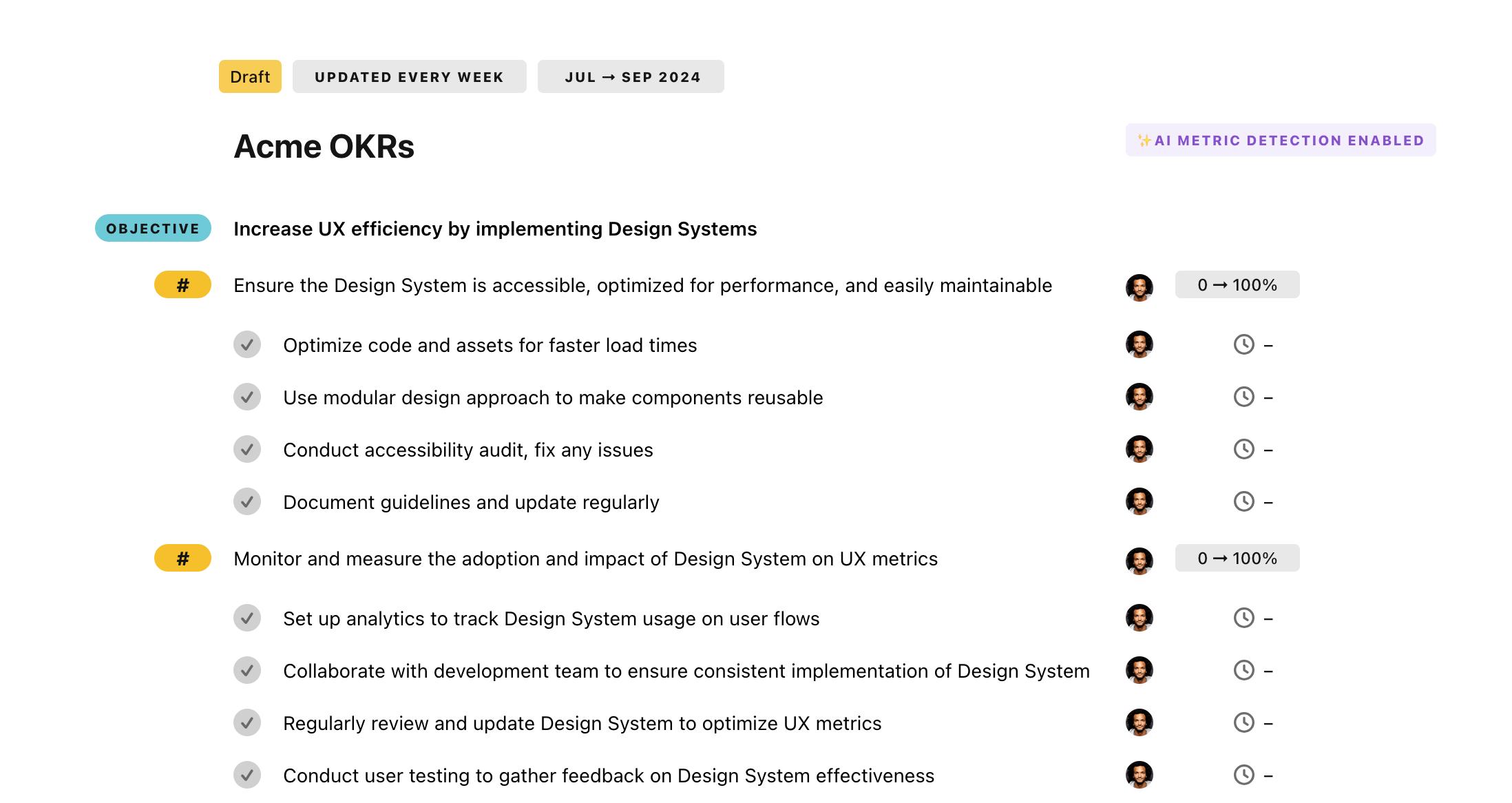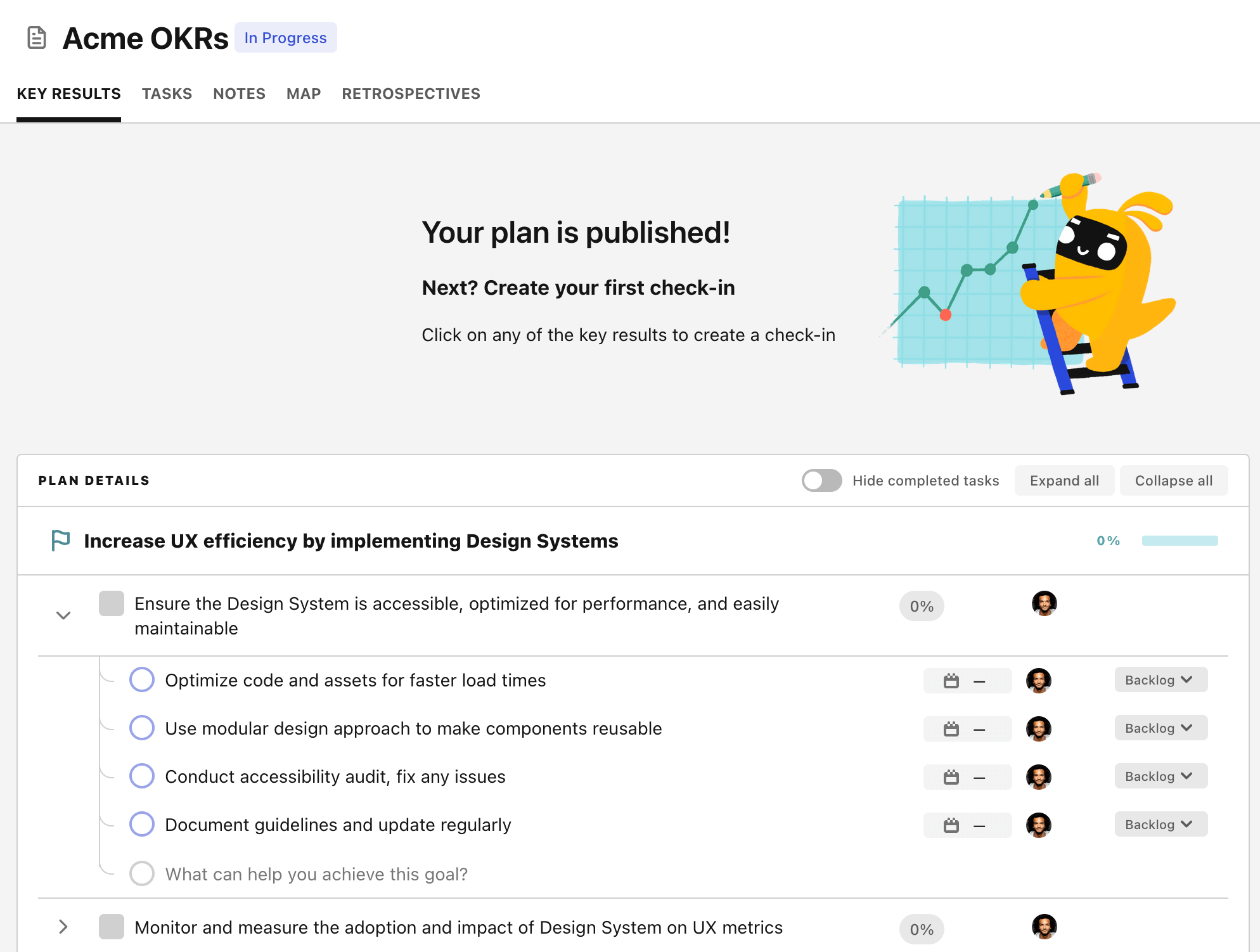OKR template to significantly improve organizational efficiency through AI and process automation
Your OKR template
The second part of this objective is to ensure that a significant portion of the team - 70%, to be precise - is trained adequately on AI tools and automation. The intention here is not just to introduce these elements into the organizational structure, but to also ensure they are effectively utilized. This will be achieved through organizing training sessions and monitoring the progress regularly.
The final aspect of this OKR focuses on the automation of routine tasks. The aim is to identify and automate the 30% most time-consuming routine manual processes, thereby saving considerable time. To attain this, the processes that require automation need to be identified first and then subjected to customized automation solutions.
Ultimately, the successful execution of this OKR hinges on a strategic blend of technological integration and human resources development. The systematic step-by-step approach ensures the smooth transition of the organization to a highly automated structure, thereby magnifying efficiency on several fronts.
ObjectiveSignificantly improve organizational efficiency through AI and process automation
KRImplement AI in at least two crucial operational areas to increase productivity by 20%
Research and select suitable AI tools or solutions
Plan and execute AI integration procedures
Identify two operational areas with potential for AI implementation
KRTrain 70% of the team on AI tools and automation for effective utilization
Arrange AI tools and automation training sessions
Monitor and evaluate training progress and productivity
Identify team members for AI and automation training
KRAutomate 30% of existing routine manual processes to save time
Identify 30% most time-consuming routine manual processes
Implement and test selected automation solutions
Research automation tools for identified processes
How to edit and track OKRs with Tability
You'll probably want to edit the examples in this post, and Tability is the perfect tool for it.
Tability is an AI-powered platform that helps teams set better goals, monitor execution, and get help to achieve their objectives faster.
With Tability you can:
- Use AI to draft a complete set of OKRs in seconds
- Connect your OKRs and team goals to your project
- Automate reporting with integrations and built-in dashboard
Instead of having to copy the content of the OKR examples in a doc or spreadsheet, you can use Tability’s magic importer to start using any of the examples in this page.
The import process can be done in seconds, allowing you to edit OKRs directly in a platform that knows how to manage and track goals.
Step 1. Sign up for a free Tability account
Go tohttps://tability.app/signup and create your account (it's free!)
Step 2. Create a plan
Follow the steps after your onboarding to create your first plan, you should get to a page that looks like the picture below.

Step 3. Use the magic importer
Click on Use magic import to open up the Magic Import modal.
Now, go back to the OKR examples, and click on Copy on the example that you’d like to use.

Paste the content in the text import section. Don’t worry about the formatting, Tability’s AI will be able to parse it!

Now, just click on Import from text and let the magic happen.

Once your example is in the plan editor, you will be able to:
- Edit the objectives, key results, and tasks
- Click on the target 0 → 100% to set better target
- Use the tips and the AI to refine your goals
Step 4. Publish your plan
Once you’re done editing, you can publish your plan to switch to the goal-tracking mode.

From there you will have access to all the features that will help you and your team save hours with OKR reporting.
- 10+ built-in dashboards to visualise progress on your goals
- Weekly reminders, data connectors, and smart notifications
- 9 views to map OKRs to strategic projects
- Strategy map to align teams at scale